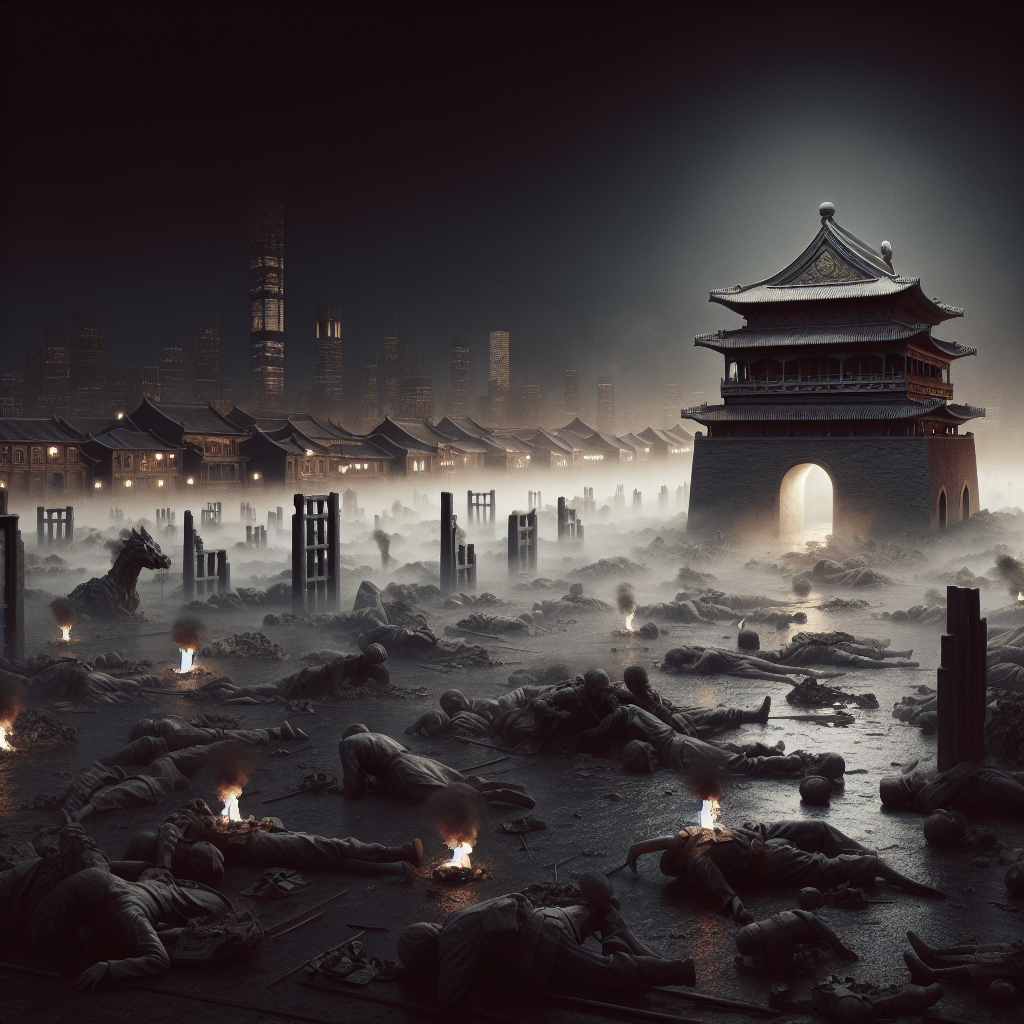Heart of Darkness: A Reflective Journey through the Nanjing Massacre
In the tapestry of human history, few events stand as stark reminders of the shadows that can envelop humanity as the Nanjing Massacre. To set the stage: It's 1937, and the winds of war sweep through China as Japanese troops descend upon the city of Nanjing. Within these historic city walls, an unimaginable tragedy unfolds over a span of six weeks. The massacre resulted in the death of an estimated 200,000 to 300,000 Chinese civilians and unarmed soldiers. While the reasons behind such atrocities were steeped in the brutal realities of military conquest and prejudices of the era, they serve as a powerful lesson about the depths we can fall and, conversely, our capacity for remembrance and change.
Historical Context
To understand the Nanjing Massacre, it's essential to recognize the geopolitical tensions of the early 20th century. Japan, an empire seeking expansion, eyed regional dominance in East Asia, and a conflict with China seemed inevitable. The invasion of Nanjing came during the Second Sino-Japanese War, marking a critical chapter in the tangled affairs between these nations. Nanjing was the capital of Nationalist China, symbolizing both political heart and military target.
The advances of Japanese forces began in July 1937, escalating tensions into full-fledged conflict. By December 1937, Nanjing was besieged. Amid the chaos and confusion of warfare, Japanese military strategies unleashed a campaign of terror that would etch suffering into the memories of countless individuals.
Inside the Crisis
The reality of the Nanjing Massacre is not merely grisly statistics but the human stories that fill its pages. The inhabitants of Nanjing were subjected to egregious acts; mass executions, rampant sexual violence, and indiscriminate destruction with haunting regularity. The calculated military approach, which ignored humane codes of conduct, saw dehumanization taken to nightmarish extents.
Yet, within this landscape of darkness, glimmers of hope emerged in unexpected places. Faced with devastation, some Nanjing residents found sanctuary within the walls of a Safety Zone. Established by a group of Westerners including missionaries and business people, this neutral territory offered relative protection to thousands and highlighted the duality of human capacity for both destruction and salvation.
Reflection and Responsibility
One might ask, how and why does examining such a harrowing chapter align with optimism? It's in the realization that horrors of the past hold keys to our collective growth. By confronting such events honestly, we encourage global societies to craft pathways of peace. Reflecting on the tragedy of Nanjing ignites essential conversations around human rights, the accountability of nations, and paths to reconciliation.
Despite the immense challenges that face international communities in acknowledging historical atrocities, proactive steps toward education and recognition help transform historical scars into platforms for progress. This commitment fuels the optimism for ensuring these stories of suffering are not consigned to history's footnotes.
Events of Remembrance
The legacy of the Nanjing Massacre continues to resonate. Every year, commemorations take place that honor the memories of victims and underscore the continuous journey towards truth and healing. These events foster understanding and dialogue, assisting in bridging cultural divides and ensuring that lessons borne of past pain guide future actions.
Towards the Future
From a scientific outlook, the acts of documenting and studying such incidents have evolved significantly over the decades. Modern technology enables enhanced accuracy in historical research, while interdisciplinary approaches allow for more nuanced understandings of the socio-political dimensions affecting human behavior during conflicts. This melding of past and present knowledge helps usher innovative solutions for peace and reconciliation.
The narrative of Nanjing is a testament to both the perils of unchecked power and humanity's remarkable ability to rise from adversity. What happened in those cold winter months of 1937 is a chapter yearning to inform brighter futures. With continual education, collective remembrance, and active discourse, each of us becomes a guardian of that hard-earned hope.
The Nanjing Massacre is indeed engrained with profound sorrow, yet embedded within are compelling lessons that underscore a hopeful trajectory for humanity. By dissecting the darkness with clarity and compassion, we prepare ourselves for a world where the echoes of past crimes illuminate pathways to prevention and understanding. We learn, we teach, we remember, and in doing so, we affirm our mutual commitment to a more empathetic world.

